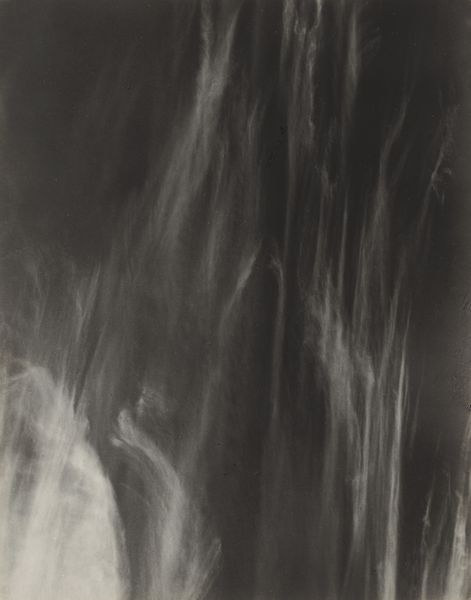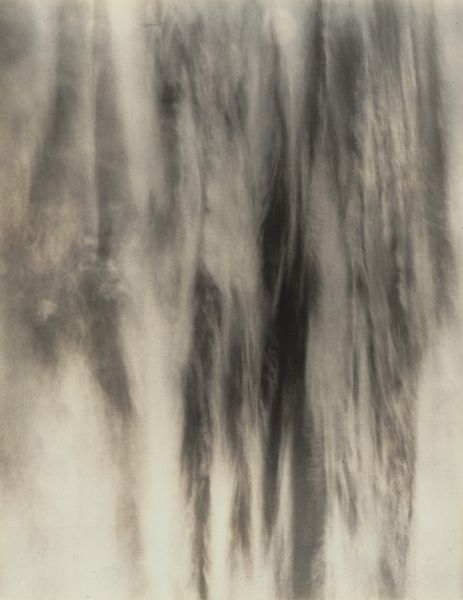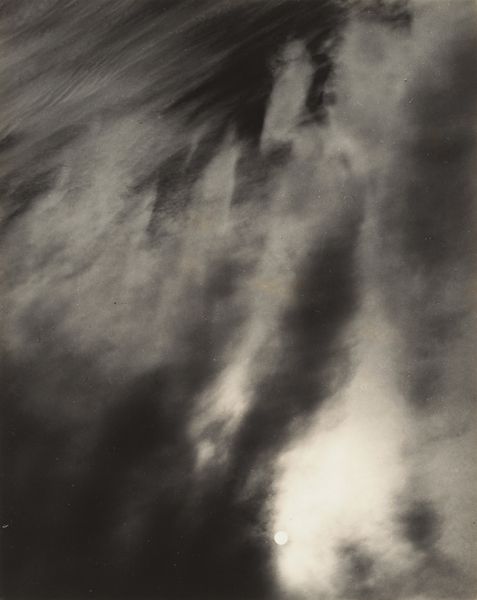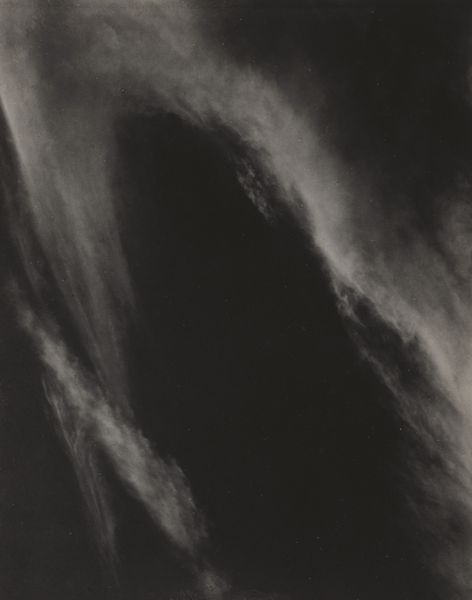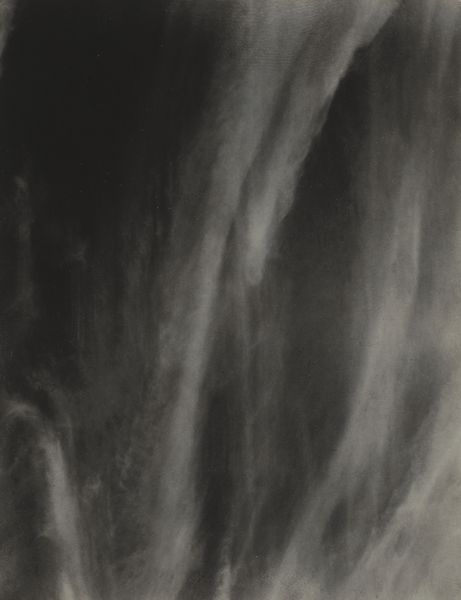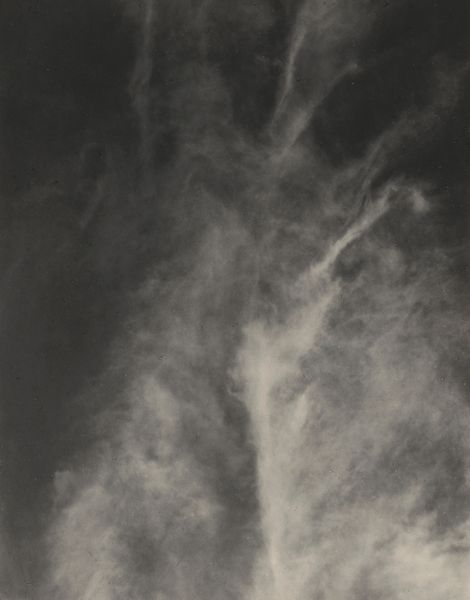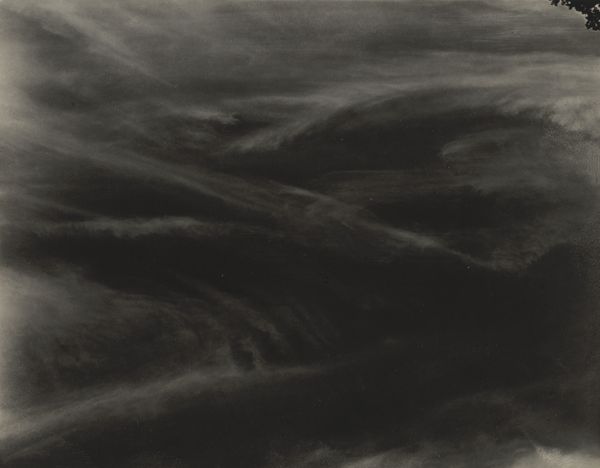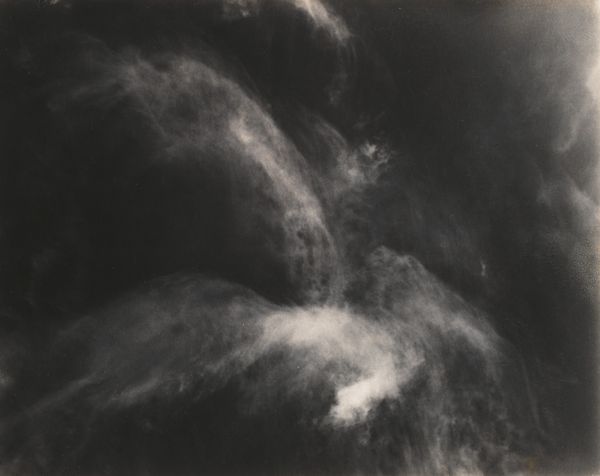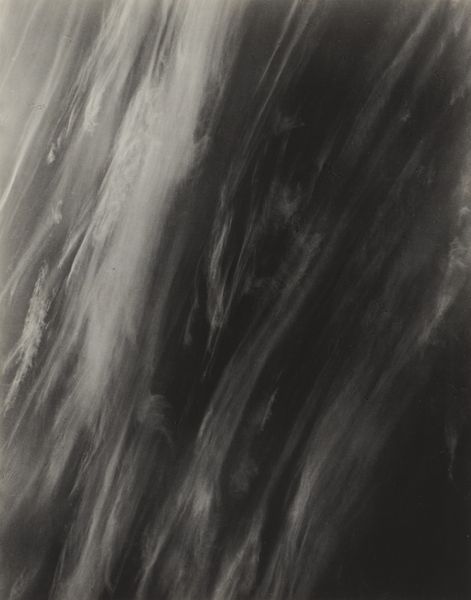
#
cloudy
#
twilight
#
black and white photography
#
snowscape
#
low atmospheric-weather contrast
#
monochrome photography
#
gloomy
#
fog
#
mist
#
shadow overcast
Dimensions: sheet (trimmed to image): 11.8 x 9.3 cm (4 5/8 x 3 11/16 in.) mount: 34.8 x 27.5 cm (13 11/16 x 10 13/16 in.)
Copyright: National Gallery of Art: CC0 1.0
Editor: This is Alfred Stieglitz's "Equivalent," taken in 1930. It looks like a black and white photograph of clouds. I’m struck by how abstract it feels, almost like brushstrokes rather than something captured by a camera. What do you see in this piece, especially focusing on the composition? Curator: Immediately, the dynamic interplay between light and shadow captivates. Notice the sinuous, almost calligraphic lines created by the clouds. Stieglitz masterfully utilizes the tonal range of monochrome photography to articulate form. Consider how the high contrast emphasizes the texture of the clouds, drawing the eye upward and suggesting a sense of limitless space. The small, dark area in the bottom is intriguing. Do you notice how it is in tension to all this ephemeral and large space? Editor: Yes, I do! That dark shape at the bottom feels almost like an afterthought. A reminder of earthly constraints? Curator: Precisely! It anchors the composition, providing a counterpoint to the ethereal quality of the sky. Think of it as a visual anchor that balances the work's overall formal structure, keeping the photograph from being purely representational, opening the possibility to associate with symbolic elements. It's about a language and its articulation of shapes. Are you familiar with other artworks doing the same with similar forms? Editor: I guess that makes sense, relating similar shapes with inner or symbolic elements, as we also see in other works from the time. I’ve learned that abstracting allows for deeper concepts, as is the case of the equivalence Stieglitz gives to this photograph, reflecting states of mind. Curator: Exactly. Reflecting inner states, a visual poem made of forms! Editor: I see it in a new light now, thanks! Curator: My pleasure! Examining form allows us entry into a wider experience and knowledge of our cultural experiences.
Comments
No comments
Be the first to comment and join the conversation on the ultimate creative platform.
